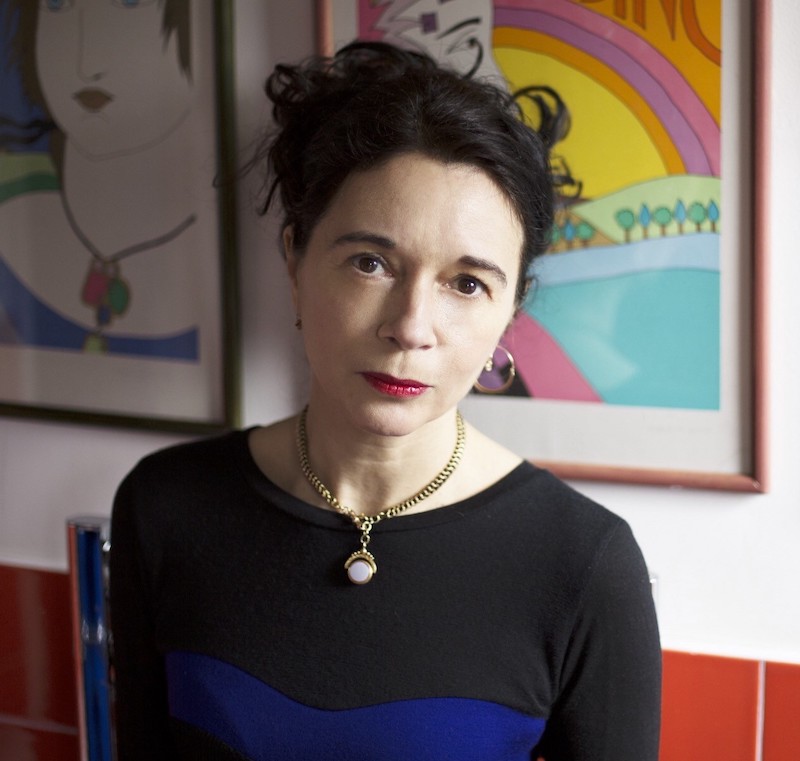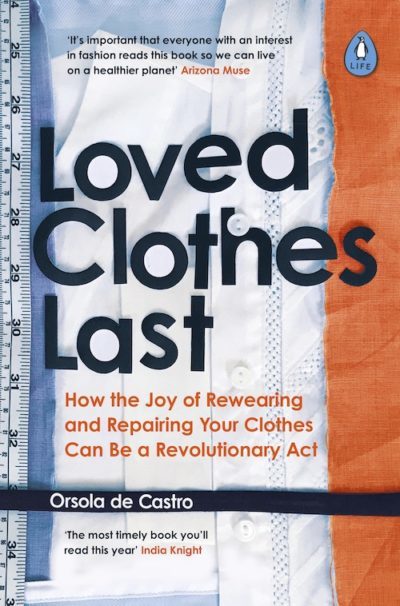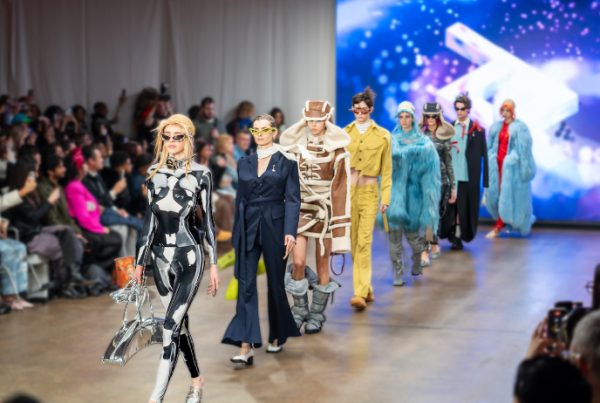Orsola de Castro is a fashion designer, the co-founder of Fashion Revolution, and a recently published author. She believes that the ethical fashion revolution starts in your own wardrobe. A unique element of Orsola’s approach is her focus on the capacity we all have to form an emotional connection to our clothes, and how that relationship itself can be an avenue for activism.
Ahead of de Castro’s event at the Wimbledon Bookfest, Arran Denning, guest writer for Darling, spoke to the author about her work.
Orsola’s book, Loved Clothes Last, is unlike anything I’ve ever read. Sure, it’s an activist’s manifesto, a self-declared ‘call to arms’. And, yes, it includes some sharp, fresh critiques of malpractice in the fashion industry. But the book is memorable not just for being informative, analytical, and logically compelling. Or indeed for providing some excellent ideas to help effect change (all of which it does brilliantly). What is special about Loved Clothes Last, is the equal focus Orsola places on acknowledging and honouring the power of an emotional experience with your wardrobe.
In its funky, scrapbook style pages, Loved Clothes Last unpacks and explores a stubborn grain of truth that ‘the most sustainable garment is the one you already own’. De Castro asks her readers to consider the fact that keeping, caring for, repairing, re-wearing, and, yes, loving one’s clothes may be the most viable, effective, way to combat entrenched issues within the fashion industry. She sees a lasting emotional relationship with your wardrobe as an avenue for activism and a form of grassroots revolution.
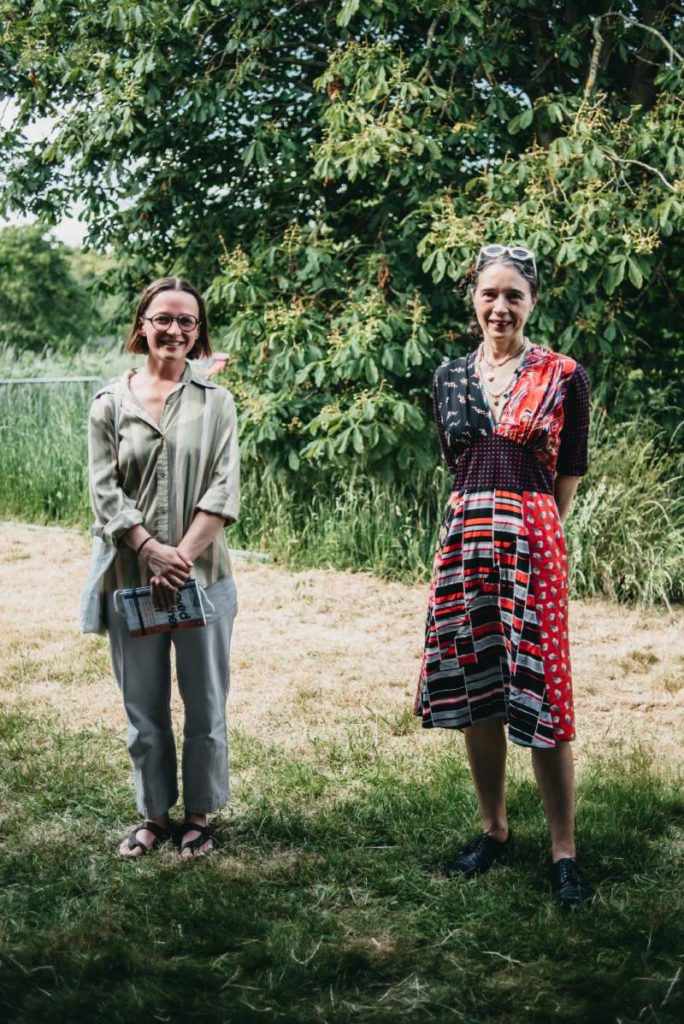
Arran Denning with Orsola at Wimbledon BookFest. Photo by Alexandrina Fleming 
Orsola de Castro 
The First Step – re-evaluating our wardrobes
In an interview over the phone, Orsola said ‘the reality is that clothes are made to be worn. They sit on your body. They often carry memories and stories. So the emotional engagement that we make with our clothes is, in a way, a first step’.
And a first step to what? Well, to properly re-evaluating our wardrobes. As in, looking for the true value, or “cost”, both human and environmental, in each and every item of clothing in that wardrobe. Whether cheap or expensive, each garment and its material has been on a serious journey. Valuing leads to keeping and for Orsola, keeping is a big part of the solution.
‘Keeping, keeping and keeping’ she said to me with a clear quickness
‘Keeping is the only antidote to a throwaway society, and by mending and repairing and making things last, you fall more in love with them. And that, I hope, will encourage people to evaluate what they are wearing and be a little bit more careful and demanding in the act of buying clothes’.
In Every Piece of Fabric, there is Creative Potential (and Revolution)
Orsola speaks as a designer, a creative professional within the fashion industry. Just as importantly, she speaks as a creative person, who has a special relationship to her own wardrobe. Her personal history is as a crocheter, mender, maker, and revitaliser of the fabrics she wraps around her body. She fixes or repurposes. Everything. Her husband’s shirts into nighties, old tights into crop tops, a silk scarf into a belt, purse, hair accessory, or gorgeous summer top. She finds that in every piece of fabric there is creative potential (and revolution). Her secrets and tricks flow through and organise her book like grammar.
And why? Why try so hard to continue revaluing and re-loving each fragment of fabric in this world? Orsola gives us two main reasons.
One: it is very likely that someone, probably a woman, has endured painful and undignified conditions to make that garment. So that fabric is the very serious product of a vulnerable person’s labour… What does it really mean to throw it away and ask that person, stuck in an exploitive system, to labour again, and again?
Two: the idea that clothes even are disposable, that they can be ‘thrown away’, is unsurprisingly, a complete fantasy. This is one of the most important and well-made points in de Castro’s book. She makes a detailed catalogue of the fabrics and materials that make up the majority of our clothes and concludes that, once they are spun, blended, woven, knitted or sewn, and treated, they are very, very permanent features on our earth.
How often is “giving away” truly a gift?
Orsola also debunks many of the ways that people “donate” unwanted clothes. She highlights the unsurprising fact that ‘charity shops are brimming with our unwanted clothes’. And, her conclusion is that, because of this overload ‘donating to charity is no longer an act of goodwill, but an act of dumping our responsibilities along with our unwanted clothes’.
Unfortunately, 70 percent of clothes donated to charity shops are sold in bulk to textile sorting companies who export the vast majority to other countries. Often these countries are ill equipped to manage the load, so the clothes are subsequently dumped in a local landfill or end up scattered on the streets. Again, unsurprisingly, the people that feel the negative repercussions of our “donations” are those who live in these countries, with less money and power, and far more vulnerability and exposure.
‘Clothes are our chosen skin’
There are, of course, times when people do really need to find some way to give their clothes away, for non-trivial reasons. For example, when people are recovering from an eating disorder, or going through a gender transition. If we can talk about a positive emotional connection to our clothes, we must also be able to talk about ways that clothes have imprisoned or traumatised people.
When I brought this up with Orsola she said that while her vision is that people do keep. It’s not just that we have to keep everything, all the time, but that we need to value. We give so that we give something that has value for others as well. There are ways to donate intelligently and that means embracing the word donate. The act of donating needs to be curated, needs to be thoughtful’. In other words, it needs to actually be a gift.
The Brands are Responsible: ‘Sustainability isn’t an act of purchase’
“Sustainability is an act of being, and therefore to give equal opportunity to a society that is incredibly diverse, particularly economically, we must not presume that sustainability implies having time and money”
Our clothes are permanent, they are here to stay, to circulate. For this reason, Orsola urges us to keep our clothes, to cherish them. If we can. Because not everyone can. There are many, many people who cannot afford to keep, because the cost of repair, access to it, and a lack of time to carry it out, excludes them from taking part.
When Orsola and I spoke about the different ways people could feel excluded, she made an incisive point, saying that in the same way the responsibility is on supermarkets to find sustainable packaging solutions, the responsibility is on clothing brands to make repairs and longevity the default option. ‘This onus on the consumer is, frankly, a brand strategy, not to undertake the full responsibility which is 100% theirs’. For Orsola, our job is to love and keep, the brands must make that supremely possible and supremely easy.
Orsola’s activism is powerful because she makes these observations. She is creative in giving different people different ways to contribute, but is literate in the emotional dynamics at play. She doesn’t make the mistake of weaponising shame, and, she resists any approach that is exclusionary. In fact, when the day of the event arrived, and the first question from the audience posed to Orsola, was, how do people move forward with these ideas without getting tripped up, and trapped, by guilt? Her response was, ‘by being rigorous’. Resisting together and applying pressure on those who have the most power, the brands.
Meeting Orsola in person – Orsola de Castro and Ethical Fashion at Wimbledon BookFest
At this Bookfest event, on the hottest day of the year so far, Orsola spoke to Camilla Morton and a small, Covid restricted audience about her book. She sat on a stage before our real live bodies – all of us draped in fabric and pressed by the heat, every strand of clothing was unforgettable, sweat grabbing at cotton, and linen, and polyester.
Orsola spoke about having written only maybe half a dozen blogs or opinion pieces before this book. She knew that she was the voice (as well as the Global Creative Director) behind Fashion Revolution, but it wasn’t until ‘today, for the first time’ that she really felt like an author.
When Camilla Morton asked Orsola how someone without much experience with this kind activism could begin. Orsola said something that felt very grounded and honest. She said that people should find their own starting point. Something your family believes in. Because all these issues are connected. From that personal starting point, you will find the most creative ways to contribute. The ethical fashion revolution starts in your wardrobe!
I found what she said moving. The idea that the family, home, and honouring your beliefs (and style), could be a perfect space to begin solving solutions. Returning to oneself again and again for resource.
And Orsola’s book Loved Clothes Last is like that. It demands for its primary idea (returning to, keeping and using) to be acted out upon itself. For I know that I’ll need to keep turning back to certain pages in order to use all those important details and implement what I’ve learned. It’s a book that is full of niche and idiosyncratic solutions. Full of stories. It’s beautiful. If you can, read it.
Follow Orsola on Instagram
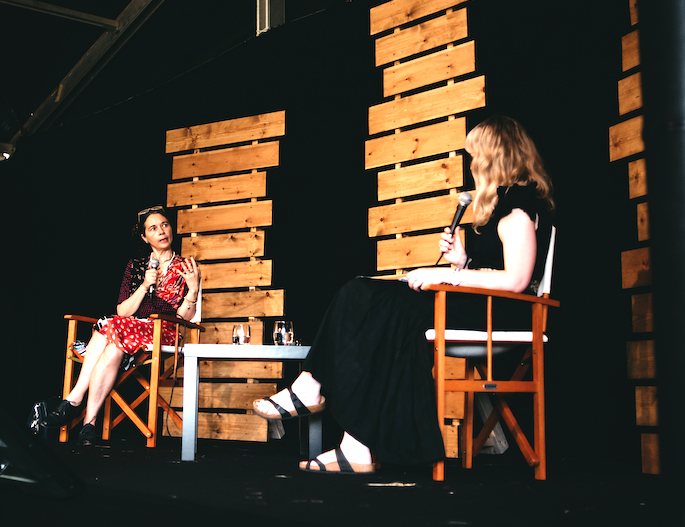
See what’s coming up at Wimbledon BookFest ‘Sunset’ this September
You may also enjoy reading https://darlingmagazine.co.uk/fashion/how-to-spring-clean-your-wardrobe/

